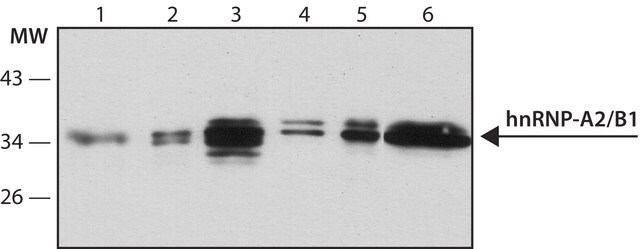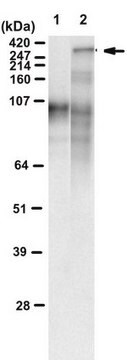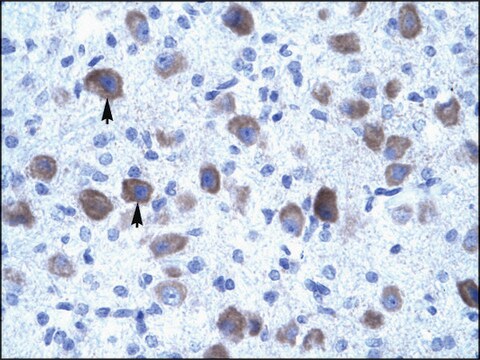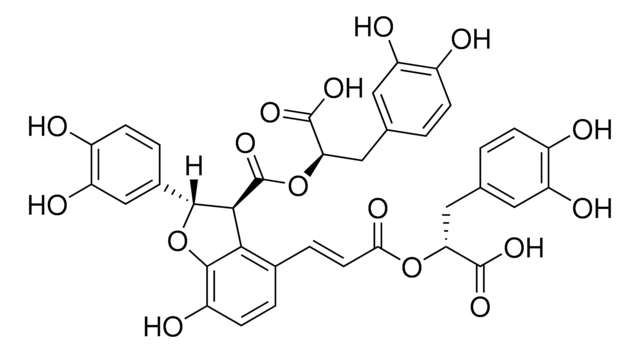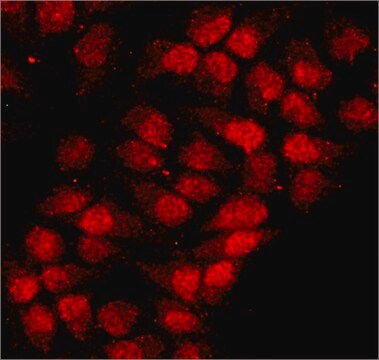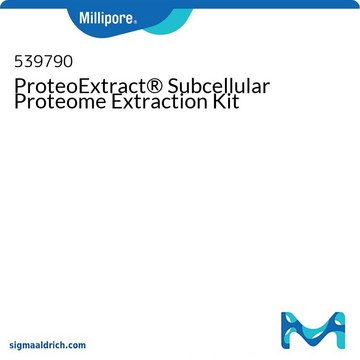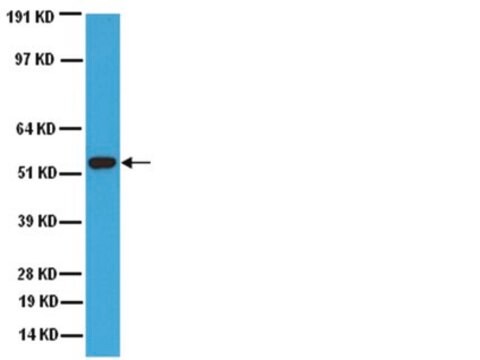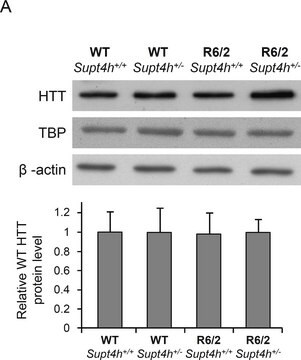MABN1788
Anti-FMR1polyG Antibody, clone 9FM-1B7
ascites fluid, clone 9FM-1B7, from mouse
Sinonimo/i:
FMR1polyG, FMRpolyG, FMR1 RANT, FMR1 repeat-associated non-ATG-initiated translation, FMR1 repeat-associated non-AUG-initiated translation, Fragile X mental retardation protein 1 gene RANT
About This Item
Prodotti consigliati
Origine biologica
mouse
Livello qualitativo
Forma dell’anticorpo
ascites fluid
Tipo di anticorpo
primary antibodies
Clone
9FM-1B7, monoclonal
Reattività contro le specie
human
tecniche
immunohistochemistry: suitable
western blot: suitable
Isotipo
IgG1κ
N° accesso UniProt
Condizioni di spedizione
dry ice
modifica post-traduzionali bersaglio
unmodified
Informazioni sul gene
human ... FRAXA(2477) , FRAXA(108684022)
Descrizione generale
Specificità
Immunogeno
Applicazioni
Western Blotting Analysis: A representative lot detected an exogenously expressed FMR1polyG EGFP fusion construct corresponding to 5′UTR of FMR1 with 50 CGG repeats (Buijsen, R.A., et al. (2014). Acta Neuropathol. Commun. 2:162).
Neuroscience
Neurodegenerative Diseases
Qualità
Western Blotting Analysis: A 1:2,000 dilution of this antibody detected an exogenously expressed FMR1polyG GFP fusion construct in transfected COS cells.
Descrizione del bersaglio
Stato fisico
Stoccaggio e stabilità
Handling Recommendations: Upon receipt and prior to removing the cap, centrifuge the vial and gently mix the solution. Aliquot into microcentrifuge tubes and store at -20°C. Avoid repeated freeze/thaw cycles, which may damage IgG and affect product performance.
Altre note
Esclusione di responsabilità
Non trovi il prodotto giusto?
Prova il nostro Motore di ricerca dei prodotti.
Raccomandato
Codice della classe di stoccaggio
12 - Non Combustible Liquids
Classe di pericolosità dell'acqua (WGK)
WGK 1
Punto d’infiammabilità (°F)
Not applicable
Punto d’infiammabilità (°C)
Not applicable
Certificati d'analisi (COA)
Cerca il Certificati d'analisi (COA) digitando il numero di lotto/batch corrispondente. I numeri di lotto o di batch sono stampati sull'etichetta dei prodotti dopo la parola ‘Lotto’ o ‘Batch’.
Possiedi già questo prodotto?
I documenti relativi ai prodotti acquistati recentemente sono disponibili nell’Archivio dei documenti.
Il team dei nostri ricercatori vanta grande esperienza in tutte le aree della ricerca quali Life Science, scienza dei materiali, sintesi chimica, cromatografia, discipline analitiche, ecc..
Contatta l'Assistenza Tecnica.